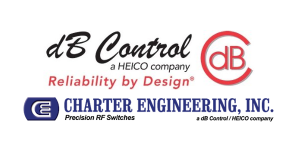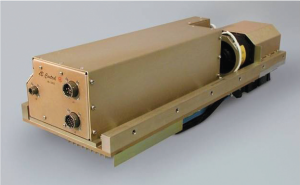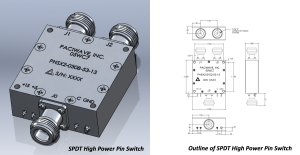
by Steve Walley, Vice President of Business Development, dB Control
Defense contractors and original equipment manufacturers (OEMs) must envision and bring to market new products that will help protect national security, as well as the military personnel who serve. One way to support this mission is to invest in a trusted contract manufacturer. Doing so can be more cost-effective than developing and sustaining internal capabilities. When OEMs decide to outsource, they are able to focus on core competencies rather than compromising critical research and development. For instance, when product testing is outsourced to a contract manufacturer, the OEM’s design engineers have more time to focus on new product development instead of doubling as test technicians. This ultimately makes it easier for the OEM to stay ahead of its competitors.
While outsourcing can save money and provide a competitive edge in the long run, there are some considerations up front. The selection process requires a substantial amount of research and planning. This is especially true in the defense sector, where stringent performance requirements of RF/microwave products must be met.
High-Voltage, Military Electronics Expertise a Must
When selecting a contract manufacturer for small quantities of highly complex military products, look for a service provider with a team of dedicated test engineers and technicians specifically trained to work with high-voltage electronics. For example, the high-power traveling wave tube amplifiers (TWTAs) used onboard the MQ-9 Reaper are designed and manufactured by dB Control. One of the primary reasons these amplifiers can perform under the harshest of conditions is the manufacturer’s strictly controlled processes, procedures and training.
In the defense electronics industry, reliability must be incorporated from the beginning – starting with the initial design. Reliability must also be top-of-mind throughout the parts selection, manufacturing processes, and environmental stress screening/testing of the critical assemblies. Contract manufacturers must adhere to stringent military specifications, focus on the training of assemblers and technicians, ensure repeatability of the products they produce – all while keeping costs down. When this balancing act is mastered, the OEM will have a high-quality product that could mean the difference between life and death in the field.
Quality Assurance, Stringent Supply Chain Ensure Reliability
As the demand for lighter, faster and more rugged military vehicles grows, contract manufacturers may suggest implementing new, more advanced components and materials into the design. Before implementing anything new into a proven assembly, it is imperative that OEMs request a thorough design and analytical review as part of the evaluation process. During this evaluation, it is also crucial that the OEM select a contract manufacturer who partners only with suppliers that hold their parts to the highest stringent requirements, such as AS9100, the quality management standard specifically written for the aerospace industry. While AS9100 aligns with the globally recognized quality management system ISO 9001:2008 standards, there are additional requirements, including acquisition traceability, configuration management, product documentation and control of work performed outside the supplier’s facilities.
Manufacturing Controls Form Repeatable Processes
While commercial markets thrive on original applications and consumer demand, military applications require innovation be supported by mature technologies. When defense contract manufacturers adhere to strict internal process controls, the information collected during production can be used to identify productivity trends and improve quality issues. For example, dB Control assemblers are trained and certified to IPC-A-610 (Class 3) Acceptability of Electronics Assemblies and IPC/EIA J-STD-001 (Class 3) Certified for Soldered Electrical and Electronic Assemblies. Both standards are recognized worldwide. The processes and standard operating procedures the assemblers use are consistent across product lines regardless of where the amplifier will end up. Ideally, a finished assembly will always have a ruggedized design built into the product.
Harsh Environmental Testing Simulates Long Mission Life
Once a design is established, proven on paper and preproduction runs are complete, a full environmental testing regimen is required to simulate a long mission life. Pushing subassemblies to extremes ensures that potential reliability issues are solved before the units are shipped to OEM customers. In addition, using proven assembly designs minimizes replacement costs and downtime in the field resulting from failed units.
Proprietary Techniques Ensure Dense Packaging and Protection
The components used in a subassembly are also susceptible to dust, moisture and extreme temperatures. Conformal coating solves this problem by protecting assemblies from the elements. A good contract manufacturer will also ensure that electrostatic discharge (ESD) safety guidelines are followed throughout the entire manufacturing process to ensure that all components are protected.
Many defense applications – including electronic counter measure (ECM) systems and electronic warfare (EW) simulation – can’t always accommodate an assembly with large dimensions. Fortunately, TWTAs and MPMs pack a lot of power into a small package. However, reducing the physical size of these power products involves using high-density packaging design. Proprietary potting and encapsulation manufacturing technology facilitate this decreased size and weight to ensure there is as little space between components as possible.
Specialized Thermal Management Keeps Systems Cool
Because military applications often require high power within a compact package, heat removal is critical. While minimizing thermal dissipation starts with the design, contract manufacturers must also use high-temperature materials that improve performance without increasing the material and manufacturing costs.
Specifically, thermal management in TWTAs can be accomplished by including large-area heat sinks and forced-air cooling fans. Historically, TWTA manufacturers have used solid copper heat sinks under the collector blocks to reduce thermal stress and increase the life of the amplifier. Unfortunately, this solution is not ideal for modern applications, as copper weighs more than aluminum. dB Control found that specialized aluminum injected with carbon composites provides better thermal management for rugged defense applications.
Contract Manufacturing Expands OEM Capabilities
Successful OEMs and defense contractors know they must evolve to support a dynamic landscape – and selecting a trusted contract manufacturer is an effective way to do so. Technological strengths, experience of personnel, manufacturing capabilities and facility capacity must all be considered before the partnership is formed. When done right, the contract manufacturer becomes a seamless extension of the OEM’s operation by producing reliable products on time and within budget.
This article originally appeared at: www.mpdigest.com






